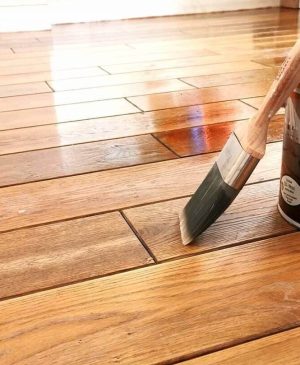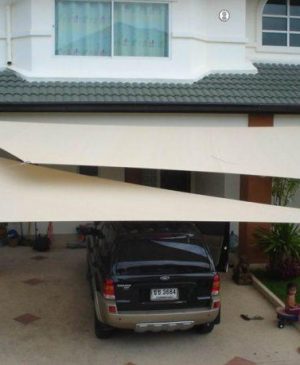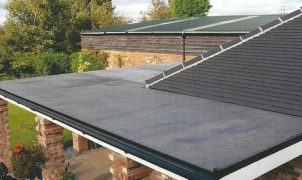Heating, Ventilation, and Air Conditioning (HVAC) systems play a pivotal role in ensuring comfort within any indoor environment, whether it’s your home, office, or industrial space. While the technology behind HVAC systems is quite advanced, their proper maintenance is essential to ensure optimal performance, longevity, and energy efficiency. For those new to the world of HVAC, understanding the ins and outs of system maintenance can seem like a daunting task. However, with a little know-how and some basic guidance, anyone can keep their HVAC system running smoothly for years to come.
This guide is designed to help beginners understand the significance of HVAC maintenance, the various components that require attention, and the steps involved in keeping the system in tip-top shape. Let’s dive in.
Why is HVAC Maintenance Important?
The importance of regular maintenance for an HVAC system cannot be overstated. A well-maintained system operates more efficiently, consumes less energy, and delivers consistent comfort year-round. In contrast, neglecting regular upkeep can lead to reduced efficiency, higher energy bills, poor air quality, and potentially costly breakdowns. For instance, a clogged air filter can strain the system, making it work harder and leading to increased wear and tear. Furthermore, minor issues that go unnoticed can quickly escalate into major problems, resulting in expensive repairs or even the need for a complete system replacement.
In short, regular HVAC maintenance is a preventative measure that helps to:
-
Extend the lifespan of the system
-
Maintain energy efficiency
-
Enhance indoor air quality
-
Prevent unexpected breakdowns
-
Save money on repairs
Key Components of an HVAC System
Before delving into the specific maintenance tasks, it’s helpful to understand the basic components of an HVAC system. An HVAC system is made up of various parts, each with a crucial role in regulating the indoor climate:
-
The Furnace: The furnace is the heart of the heating component in an HVAC system. It generates heat, which is then distributed throughout the building via ducts.
-
The Air Conditioner: This component is responsible for cooling the air during hot weather by removing heat and humidity from the air inside and expelling it outside.
-
The Heat Exchanger: This part transfers heat to the air that circulates through the home. The heat exchanger is typically found in both furnaces and air conditioners.
-
The Ductwork: This network of pipes and vents carries heated or cooled air from the HVAC unit to different areas of the building.
-
The Thermostat: The thermostat regulates the temperature by controlling the HVAC system’s operation. It sends signals to the furnace or air conditioner to heat or cool the space as needed.
-
The Filter: The air filter traps dust, dirt, and debris before the air is circulated. Over time, filters get clogged and must be replaced to maintain air quality and prevent the system from working harder than necessary.
-
The Condenser Coil (for Air Conditioners): This part releases heat from the indoor air outside. It needs to be cleaned regularly to maintain its efficiency.
Essential HVAC Maintenance Tasks for Beginners
Now that you’re familiar with the basic components of an HVAC system, let’s walk through the key maintenance tasks that every beginner should be aware of. These tasks can often be completed by homeowners themselves, though certain tasks may require the expertise of a professional technician.
1. Change or Clean the Air Filter Regularly
One of the easiest and most effective maintenance tasks is replacing or cleaning the air filter. The air filter traps dust, dirt, pet dander, and other particles, which helps maintain indoor air quality and prevents these contaminants from entering the HVAC system. A clogged air filter reduces airflow and causes the system to work harder, increasing energy consumption.
It’s generally recommended to change or clean the air filter every 1-3 months, depending on usage and the type of filter. If you have pets or live in a dusty area, you may need to replace the filter more often.
2. Inspect and Clean the Coils
Both the evaporator and condenser coils need to be regularly inspected and cleaned to ensure the HVAC system operates efficiently. Over time, dirt and debris can accumulate on these coils, reducing their ability to absorb and release heat effectively. The evaporator coil, which is located inside the air handler, absorbs heat from the indoor air. The condenser coil, found outside the system, expels the heat to the outdoors.
For air conditioners, it’s important to clean the coils annually to prevent inefficiency. You can do this by gently brushing the coils with a soft brush or using a vacuum to remove dust and debris. If you’re not comfortable doing this yourself, you can hire a professional HVAC technician.
3. Check the Ductwork
The ductwork is essential for the proper circulation of heated and cooled air. Leaks, blockages, or poor insulation in the ducts can reduce the efficiency of the system and lead to energy loss. To check the ducts, visually inspect for any visible gaps, cracks, or signs of wear. If you notice any issues, it may be time to have your ducts sealed or insulated by a professional.
In addition, it’s a good idea to have your ducts professionally cleaned every few years to remove any accumulated dust, mold, or other debris. This will improve both air quality and system performance.
4. Test the Thermostat
Your thermostat plays a crucial role in regulating the temperature and ensuring that your HVAC system runs when it’s needed. Over time, thermostats can become inaccurate or malfunction. Testing your thermostat regularly will ensure that it’s reading and maintaining the correct temperature.
Consider upgrading to a programmable thermostat, which allows you to set specific temperatures for different times of the day. This can save energy by avoiding unnecessary heating or cooling when you’re not at home. Additionally, if you notice that your thermostat isn’t working as expected, it may need recalibration or replacement.
5. Inspect the Furnace and Burner Assembly
If you have a furnace in your HVAC system, you’ll want to inspect it at least once a year. The furnace should be cleaned to remove any dust, dirt, or debris that may have accumulated. This ensures that it continues to operate efficiently and prevents overheating.
It’s also essential to check the burner assembly. This part of the furnace is responsible for producing heat, and it can become clogged over time. A clogged burner can cause poor combustion, resulting in inefficiency and higher energy costs.
6. Examine the Condensate Drain
For air conditioners, the condensate drain is responsible for removing moisture that’s collected during the cooling process. If the drain becomes clogged, it can lead to water damage and poor performance. Check the drain regularly and clear any blockages by using a wet/dry vacuum or a cleaning solution designed for HVAC systems.
7. Schedule Professional Inspections
While many maintenance tasks can be handled by homeowners, some aspects of HVAC maintenance require the expertise of a professional technician. An annual inspection by an HVAC professional will ensure that the system is running at peak efficiency and can help catch any issues early on before they become costly problems.
A technician can inspect the heat exchanger, lubricate moving parts, check refrigerant levels, and perform other crucial tasks that will help extend the life of your system.
Conclusion
Maintaining an HVAC system doesn’t have to be a daunting task. By taking a proactive approach and completing essential maintenance tasks, you can keep your system running efficiently, reduce energy consumption, and improve indoor air quality. Changing filters, cleaning coils, and scheduling regular inspections are simple yet effective ways to ensure that your HVAC system continues to perform at its best.
Remember, regular maintenance not only saves you money on repairs and energy costs but also extends the lifespan of your system, allowing you to enjoy reliable comfort for years to come. So, take the time to familiarize yourself with your HVAC system and perform these tasks regularly, and you’ll reap the benefits of a well-maintained system.


















